The ruins of Oradour-sur-Glane
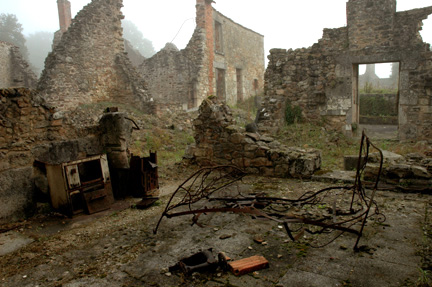
The photo above shows the interior of
one of the ruined buildings. On the left is what appears to be
an old stove and on the right is an iron bed frame that was twisted
in the fire that destroyed this building.
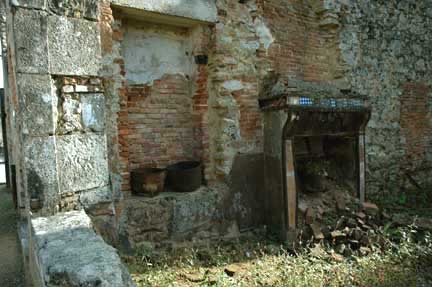
The photo above shows iron pots and what
appears to be a fireplace, detached from the building, on the
right. Inside what looks like a fireplace is an iron pot. Although
Oradour-sur-Glane was a prosperous town in a rich farming community,
many of the homes did not have electricity and some of the villagers
were still cooking with pots hung over an open fire.
The photo below shows what appears to
be a trough for watering horses on the left. Behind the gate
on the right are two old rusty cars. This photo was taken on
the road to the cemetery.
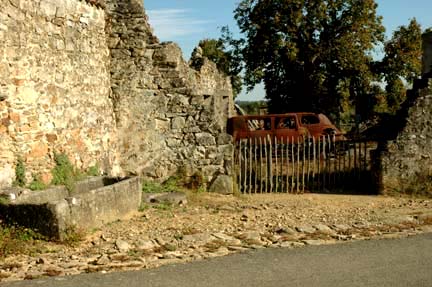
The artifacts that can be seen in the
ruins show a way of life that no longer exists. Walking through
the ruins is like strolling through the past and peeking through
the windows into a bygone era. The survivors mourn the loss of
their peaceful way of life as well as the loss of their loved
ones. The French government expropriated the 40 acres of the
ruins of the village in 1946 and preserved them so that future
generations could learn of the suffering of the French people
during the German occupation.
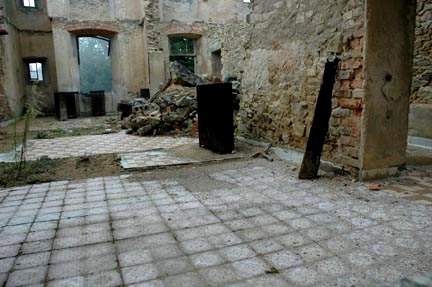
The photo above shows the tile floor
in the medical office of Dr. Paul Desourteaux on Rue de Emile
Desourteaux, the main street which was named after his grandfather
who was the mayor of Oradour-sur-Glane from 1892 to 1906. His
son, Dr. Jacques Desourteaux, was a partner in the medical practice.
Dr. Paul Desourteaux had three other sons: Hubert, Paul and Etienne.
The body of Dr. Paul Desourteaux was one of the 52 that were
identified. The Offical Publication gives his first name as Jean.
The photo below was taken in the lower
town in the ruins of a building across from the church. I have
no idea what this object is, but it has an emblem that looks
like the Texaco star. It is located in the ruins of a building
that Philip Beck identified as the Bouchole barn in his book,
"Oradour, Village of the Dead."
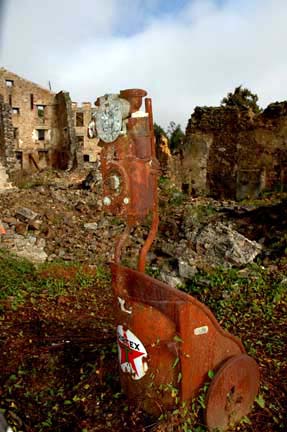
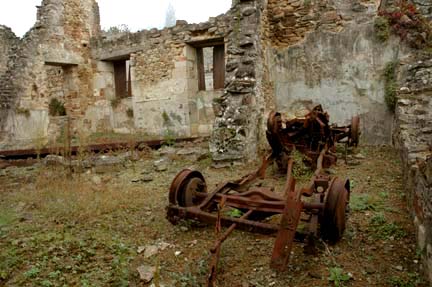
The photo above shows the rusted frame
of a farm vehicle. This photo was taken in one of the ruined
buildings in the back of the church.
|